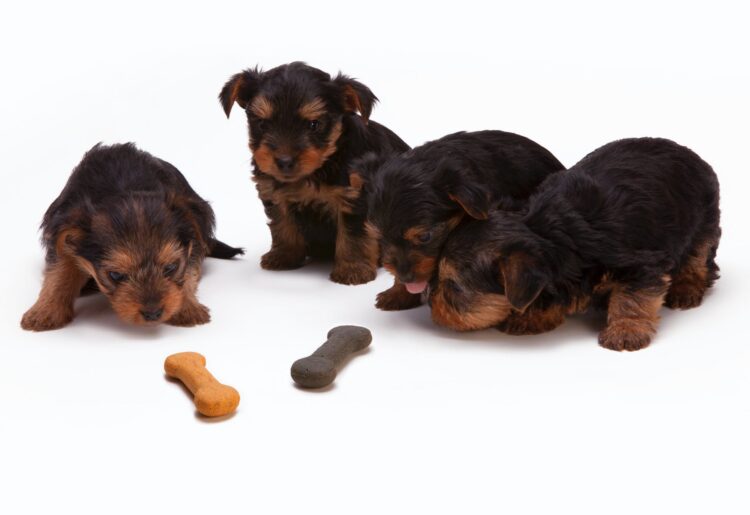Most dog owners love giving their dogs treats. From rewards due to good behavior to rewards during training, the reasons for providing dog bites vary from person to person.
Over treating your dog can, however, come with troublesome health conditions. When giving the dog treats, there are a handful of factors you must consider. Read along with us as we explore;
- How often you should give your dog treats.
- How to use the Dog Treats Efficiently
- Selecting the Best Dog Treats
How Often Should You Give Your Dog Treats?

When determining how often you should reward your dog with treats, your primary focus should be on the calorie content. You should ensure that these extras aren’t more than 10 percent of the dog’s caloric intake.
Besides, it is imperative that you only give them these treats after an action. This is because, if you feed your dog these regularly, it will begin to ‘think’ that it is entitled to the gift. It would then come to expect it from you.
These may also spoil its appetite and even make it obese in extreme cases. To effectively reward the dog, you can give the treats between mealtimes.
This will be crucial in instilling the idea that you’re not giving it something that is part of its regular diet but a treat.
How to Use Them Efficiently and Engage the Dog with Different Types
As you probably already know, the basis for rewarding dogs with treats is to encourage them to stick to good behavior, or to associate specific commands with the gifts. Ideally, your dog should not be expecting to get it as a regular habit.
Only announce the treat when the dog has accomplished something or done something that pleases you. It should continue acting good to get this reward.
The basis for this action is to ensure discipline before showing affection. Be consistent with the rewards ensuring that you only give them for the right actions and at the correct times.
When rewarding the dog, hold the treat above its head, and then move it slowly towards the back of its shoulders. Holding the treat over the dog’s head and moving it towards the back of its shoulders will make it follow your hand with the head, then sit down.
Continue lowering the treat to its head then calmly say, ‘sit down’ as the dog sits. Let it munch the treat after sitting down.
Now, when enforcing this behavior and the dog tries to snap at the treat or jump to grab it, pull your hand back to take the treat away, and then start again. This will help you enforce discipline to let it know that you’re in control and that you decide when to or not give the treat.
Going with this approach will ensure that the dog recognizes you as its ‘boss’ and not assuming that it’s superior to you. It will also help ensure that treat times remain special.
Selecting the Best Dog Tidbits

If you fancy making dog treats from home, be sure to work hand in hand with a certified veterinarian. The vet will help you formulate the vital compounds or mix ingredients in the right proportions to avoid imbalanced nutrient rationing.
Either way, you can also opt for a more straightforward approach and buy readymade all-natural dog rewards. Here are a few factors to consider when choosing dog treats.
The Ingredients. The occasional one you reward your dog with will significantly impact its eating regimen. It is recommendable that you insist on gifts made using organic or natural ingredients. If you’re shopping online from pet stores, review the treat’s nutritional content under the description section.
The calorie content. As mentioned earlier in this guide, the ideal total calorie content that your dog consumes per day should constitute less than 10 percent of its diet. Pay special attention to the calorie content that’s shown on the package or can of the treat.
The texture of the treat. If you’re looking to enhance your dog’s dental health, firm and ‘harder’ treats are viable options. As the dog gnaws on the hard treat, it will be cleaning plaque that could have been building around its teeth. If you’re rewarding a senior dog, however, you’ll need to focus on smoother treats primarily. This will ensure that the dog doesn’t have difficulties or experience pain when biting on the treat.
Types
These are available in numerous variations. Here’s a breakdown of some of the most common types of dog treats.
Human food:
The human food treats majorly consists of table scraps. Dogs eat a wide variety of human foods, but not all of them can be beneficial. Fresh foods, fruits and veggies like apples, seafood, carrots, and lean meat are great for dogs. Avoid giving the dog too many sugary and high-calorie foods like cheese, cookies, hot dogs, and crackers.
Dental chews:
These treats are made from hard digestible materials or corn starch. They’re generally safer than bones and can also help enhance your dog’s dental health.
Soft ones:
These include baked dog food like Mini Donut Dog Treat Assortment and others. They’re available in a plethora of shapes, flavors, and colors. You give them in small bite sizes when training the dog as rewards.
Freeze-dried and jerky dog rewards:
You can find these types of threats in a plethora of forms, including seafood, meat, and liver. They’re tasty and preferable option among many dog owners for training these pets.
Crunchy dog treats:
Also known as dog biscuits, these rewards are usually available in different sizes, flavors, and shapes. When ordering for crunchy dog treats online, check to ensure that they match the dog’s size.
Get Dog Rewards Delivered to Your Door

If you fancy convenience, then having your favorite dog rewards delivered to your door must be interesting. Before ordering for dog foods online, be sure to check the brand’s reputation online. If you’re on a tight budget, your best bet would be to order the treats from companies like Tailbangers that offer free shipping for most orders.
 Hi Boox Popular Magazine 2024
Hi Boox Popular Magazine 2024



